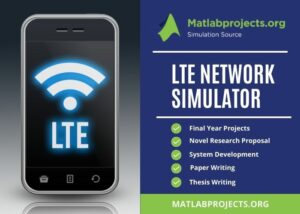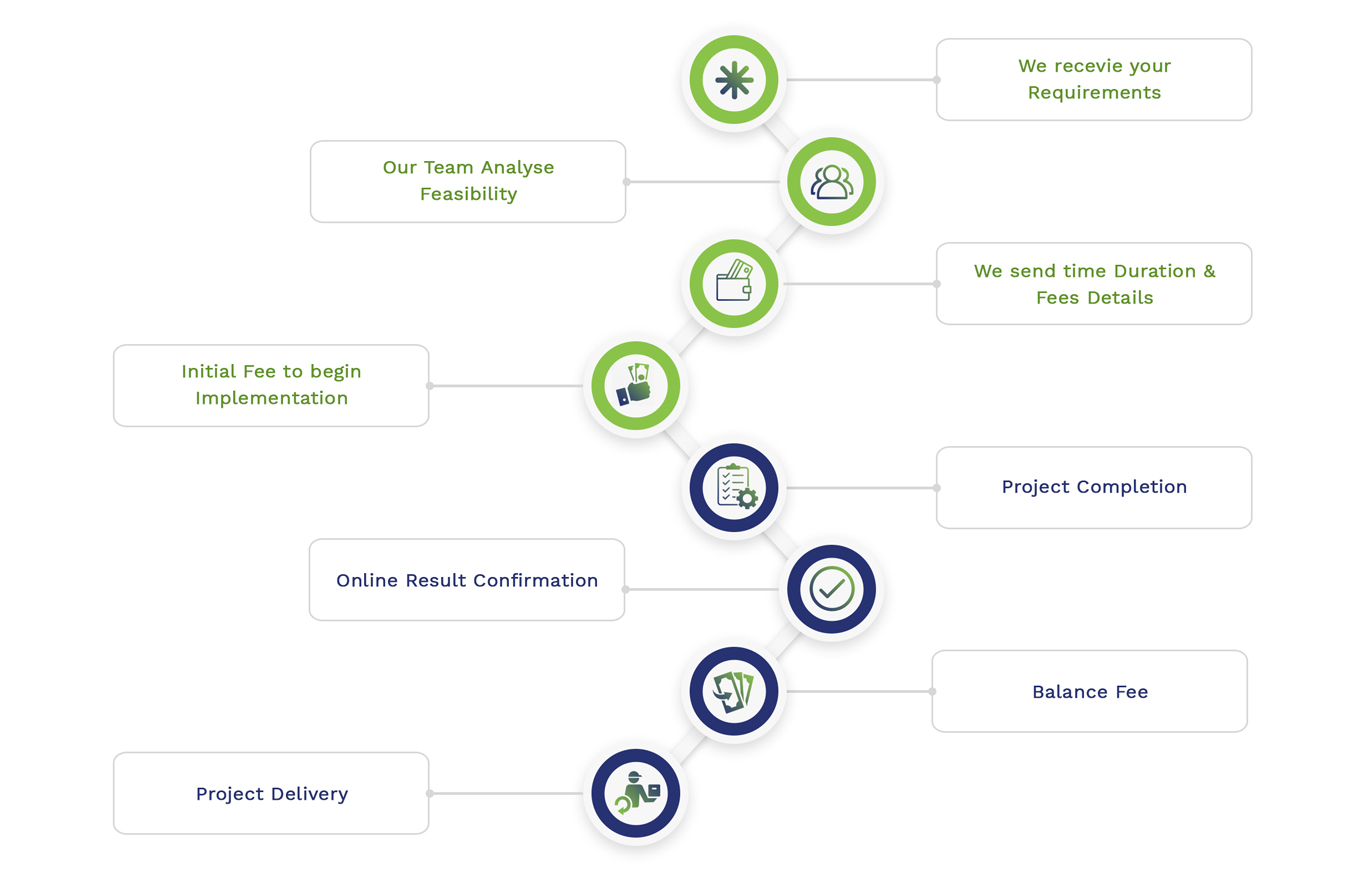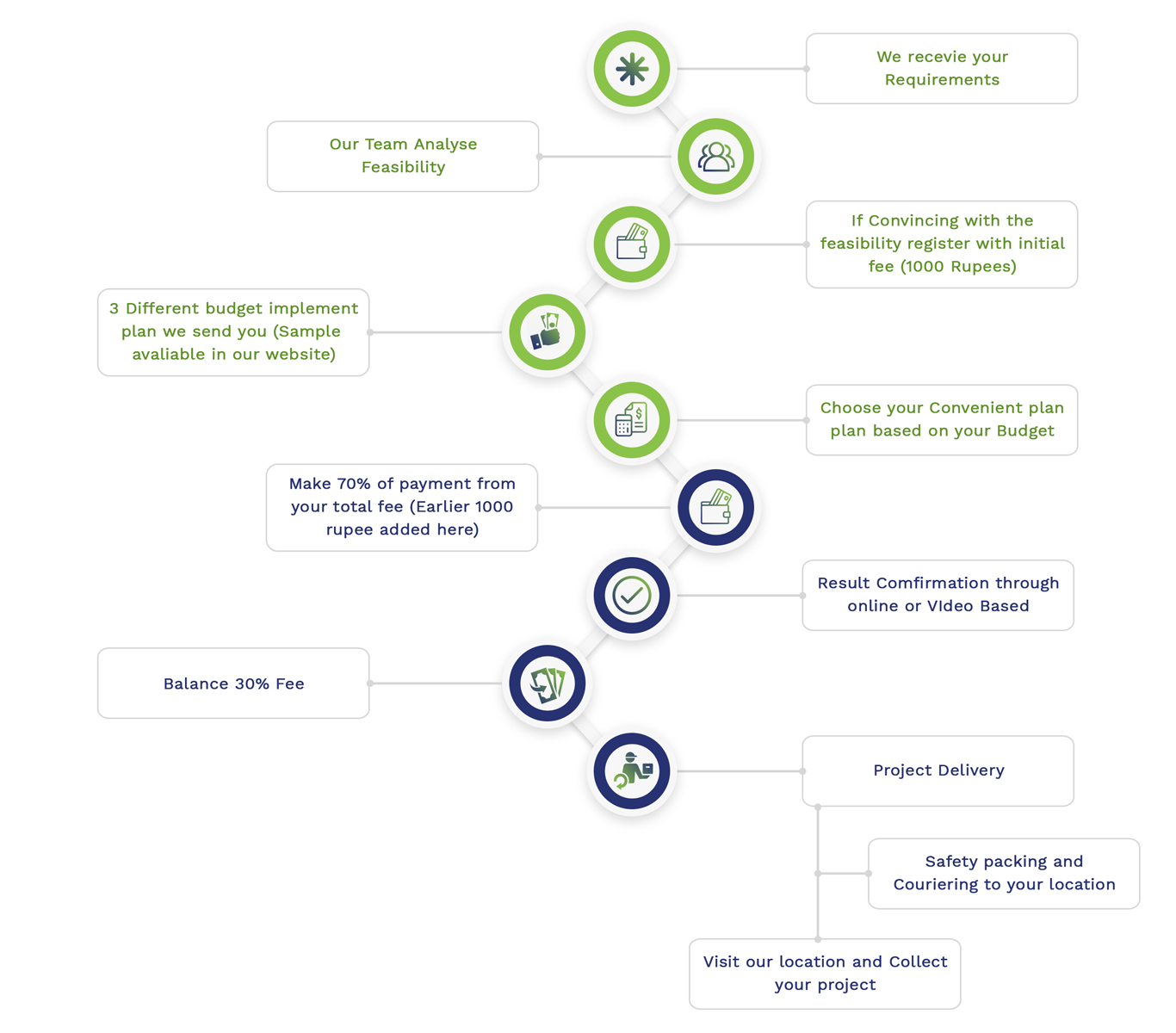LTE or Long Term Evolution is a wireless network standard that mainly aims at providing swift services to rectify the issues of second and third-generation wireless communication protocols.
How do LTE networks function?
- LTE makes use of simple network components and new radio technologies for improving the performance and data rate
- IP or internet protocol is utilised to accomplish wide variety of services in an easier manner
The merits of LTE are harnessed both by the customers and service providers. This article is a complete overview of LTE network simulator given to you by our research experts. Let us first start by understanding the major properties of LTE.
Key Features of LTE
LTE Network Simulator provides users with a number of benefits such as the following,
- Streaming audio and video
- 2G and 3G have slower download and upload rates than LTE
- The universal average LTE download speed is indeed 17 Mbps, with 12 Mbps upload speed
- Increased speed with LTE – Advanced
- With LTE-Advanced, you may get even faster speeds
- LTE-Advanced is 2 or 3 times quicker than normal LTE in terms of download and upload rates
- All the LTE Advanced devices work with conventional LTE
- Less power consumption
- LTE-M (machine-type communication) and NB-IoT (Narrow Band Internet of Things) both are modelled on the LTE standard
- It is done with major modifications to facilitate minimal large network power consumption in M2M functions
- Connection to services in real time
- Users can communicate with others using voice over LTE (or VoLTE) without encountering any lags or jitter
- Aggregation of carriers
- This feature of LTE-A increases network efficiency and scalability up to 100 MHz of bandwidth over five element carrier (bands) of 20 MHz each
- To boost signal strength, efficiency, and consistency, LTE-A smartphones mix bands spanning multi – component carriers
Therefore it can be clearly understood that LTE Network Simulator is one of the most crucial standards of communication these days. With this respect, let us now provide you with expert answers to some frequently asked research questions about LTE network simulation.
How is spectral efficiency enhanced by LTE Network Simulator?
- LTE employs a variety of strategies to make enough use of the spectrum resources, which will be assessed in seconds, bits, or Hertz
- Greater complexity programming (modulation)up to 64 QAM, Multiple Antenna Approaches like MIMO, and employing OFDMA (on dynamic spectrum bandwidth approximately 20 MHZ)
Generally, we provide complete technical assistance so that you get all your doubts solved instantly. With more practical explanations and descriptions, our technical team has successfully guided an ample number of research projects in LTE Network simulator.
What are the difficulties faced in LTE Network Simulator?
- LTE extensions could not be as upgradation with existing infrastructures
- The beginning cost of installation will be significant due to a completely new Radio Access Technology (RAT), numerous antenna approaches, and a variety of network configurations
In the long run, our engineers have worked hard to find solutions to these problems by combining personalized techniques with the most recent technology breakthroughs. The projects that we handled were approved by several scientific institutions. Work with our technical staff to get your research idea off the ground.
Why should we all be concerned with LTE?
- The wireless mobile landscape could be fundamentally reshaped by LTE
- LTE paves the way for many yet-to-be-imagined service
Get in touch with us to find expert solutions for many such research questions and answers to all research issues concerned with LTE Network Simulator. We will provide you with specialists and teams of writers and developers to aid and assist you throughout your research career. Now let us look into the LTE layered structure,
Layers of LTE
Layers of LTE Network Simulator
- SML or Service Management Layer – for service level agreements
- EML or Element Management Layer – for device level mechanisms
- NEL or Network Element Layer – for various devices
- NML or Network Management Layer – for managing topologies
Reach out to us regarding more details with simple practical explanations on these layered structures in LTE Network Simulator. Let us now talk about the new paradigms supported by LTE
LTE supporting New Network Paradigms
- The mobile network layer promises added features for emerging services and apps
- As well as network infrastructure models, with the help of virtualization can also be obtained by LTE system
- IoT applications, D2D, P2P and M2M communications and ICN are the novel services that are benefited by LTE
As a result, LTE network Simulator systems have increasingly opted for research and real-time implementation by many researchers and students. We will provide you with enough research data on all recent advancements in the field from benchmark reference sources. Now let us see the important research topics in LTE Simulator.
Research topics in LTE network
The key and relevant study subjects in long-term evolution standards are listed below. You can get in touch with us if you need any additional information on the LTE Network Simulator subject listed below.
- Antennas for multiband phones been used in LTE operations
- Massive MIMO, Waveform design, Single Carrier Modulation and PAPR reduction
- Radio Resource Management for M2M Applications in 5G Networks
- Polar Code Latency in 5G and LTE/LTE-A by Altera FOGA
- Simulations of 3-5G novel air-interface critical mechanisms at the link level
- Delay Aware Joint Uplink and Downlink Scheduling
- Wireless Multipoint Transmission in a Dynamic Environment
- In 5G mm waves, performing BER and PAPR analysis using UFMC Filters
- Future 4G/5G wireless communications networks will be built on this protocol
- SCMA (Sparse Code Multiple Access) and Filtered-OFDM (Filtered-OFDM) are two types of SCMA (F-OFDM)
- For effective flow assignment, middleware design and policies are also important
- In future networks, D2D and D2I complete Dynamic Spectrum Utilization Effects
For all of the above categories, we provide specialist advice. One of the most well-known research support facilities in the world is ours. Everything from topic selection to the publication of research articles in reputed research journals is covered by our credible online research support. We also offer technical assistance, both in terms of design and project implementation. Now let us look into the ways of performing LTE network simulator
How to perform LTE network simulation?
- With simulation, the network devices, modules and network traffic established in the system can always be configured equivalent to physical world
- The network simulators can readily simulate settings that are difficult to create in actual life owing to cost and perhaps other restrictions
- By modifying queuing mechanisms within equipments on nodes might just be too costly and time consuming in terms of usability, these situations can be evaluated using wired systems
- Furthermore, there are very few papers published on these new LTE design concepts.
- Many academics have been interested in LTE (Long-Term Evolution) wireless communication systems in recent decades
- As a result, this topic provides the world with numerous future potential study options
- One of the most critical topics examined by researchers in LTE cellular networks is to increase QoS or Quality of Service
- Protocol development is driven by network performance, packet drop end-to-end latency. Simulation tools could be used to verify the efficiency of enhanced protocols
The network simulation tools like OPNET, OMNeT++, and NS3 were investigated and extensively compared in our research projects for wireless communications systems. You can reach out to us at any time for advanced details on all such simulators and their benefits. In this regard let us look into certain important LTE simulation tools
LTE simulation tools
The following are the major simulation tools used in LTE network projects
- OpenLTE, SimuLTE, LTE – EPC and LTE – Sim
- LENA, Vienna and NetSim
- Valid8 LTE core Network Simulator
We gained expertise in using all these simulators. You can choose more than one tool to complement the usage of one another. Simulators are crucial in both academic and corporate research and innovation. These are beneficial in analyzing performance and, as a result, trying to improve the systems. Now let us look into the different simulation tools for LTE
Other simulation tools for LTE
- NS 2 – NS 2.33 and NS 2.32
- OPNET – OPNET modeller is supported while LTE – A is not
- NS 3 – LENA based LTE Module Support
- MATLAB – LTE system toolbox supported
- QualNet – to investigate radio access technologies in UMTS and LTE wireless cellular network systems
- OMNET ++ – SimuLTE, MIMO, SAE and OFDM technological support
- OMNeT++ is compatible with Unix-like systems, Linux and Windows (XP, Win2K, windows 7, 8)
- SimuLTE is a comprehensive simulation software that simulates LTE-Advanced networks and LTE using the OMNET++ framework
- It’s written in the C++ programming language
- SimuLTE is an open source platform based on the INET and OMNeT ++ Framework
- SimuLTE can be installed on any platform that facilitates OMNeT++ such as Windows, Linux or Mac OS X
- The simulation tool requires the installation of INET – Framework v2.3 and OMNeT ++ v4.6
For a detailed analysis of different simulation tools, you can readily reach out to us. Our research experts have acquired world-class certification regarding the usage of almost all simulation tools for LTE Network Simulator. Reach out to us for more details. Let us now understand the usage of SimuLTE.
Using SimuLTE
- SimuLTE’s goal is to provide a simple platform for academics to evaluate and assess innovative solutions.
- It is possible to scale because it uses the modular approach of OMNeT++
- It can also be used in conjunction with other INET Framework components
- It helps optimizers like solver like Cplex
- SimuLTE is also used in conjunction with Veins to model LTE-enabled vehicle networks
As we have helped in many practical project implementations, we are capable of solving all the issues that you would face in your research career. There are some prerequisites needed to use such LTE Network simulator. Let us see them briefly below.
LTE System Prerequisites
- SimuLTE is compatible with OMNeT++
- It can be used on systems like Windows, Linux, or Mac OS X
- INET-Framework v4.2.2 and OMNeT++ v5.6.2 are required too
- SimuLTE is also available in older versions and is compatible with INET-Framework v3.x
- Upcoming functions would not be given with backward compatibility
Provided the exponential use of wireless technology standards these days, you would need experienced research guidance with you to assist you on all the research requirements including the technical needs as mentioned above. Our technical team is here to guide you on all such crucial steps. In this aspect, let us now look into the important features of LTE networks
LTE Main Features
- User Terminals
- Interference, mobility and different network traffics with inbuilt applications including web, VoD, D2D communications, handover, gaming and VoIP
- APPS
- H.264 video streaming, VoIP GSM AMR, FTP and gaming in Real-time
- MAC
- CQI reception, selecting transport format and allocation of resources
- PDU concentration, Buffering and coding for analysing across layers
- PHY
- SINR curve Transmitter diversity
- Computing channel feedback and realistic modelling of channels
- RLC
- Segmenting AM and UM
- AM reassembly retransmissions
- E – NodeB
- Micro, macro, pico eNodeBs and coordination of inter – eNB via X2 interfaces
- Handover and CoMP support
- Round Robin, Scheduling algorithms like Max C/I and proportional fair
These are the main characteristic features of LTE network simulator for which quality data have to be obtained on simulation. In addition simulators for networks must be able to replicate real-time scenarios in the virtual environment. Otherwise, its effectiveness and precision could be questioned. So it is important that you analyze many simulation tools before starting your LTE network simulator project. Since we have more than 15 years of research experience in LTE networks, we are here to guide you in all aspects of your research. In this regard let us now talk about the NS3 module.
LTE NS3 module
- LENA or LTE – EPC Network SimulAtor is established for NS 3 LTE network
- The major components of LENA are as follows
- EPC Model
- This model includes the SGW, PGW, and MME’s basic network interface and functions
- The EPC model has tools for simulating end-to-end IP connections via LTE
- The data flow over the PGW and SWG,and multiple eNodeBs are coupled to one SGW/PGW node
- LTE Model
- Between UEs and eNB nodes, this architecture contains Radio Protocol Stacks like RRC, PDCP, RLC, MAC, PHY
- EPC Model
Therefore, on the basis of simulation, the standard and performance of any project can be easily determined and analysed respectively. How have these evaluations of performance been done?
Specific LTE parameters for Simulation
The performance evaluation is based on certain parameters deemed to be specific to the simulation of LTE network Simulator as given below
- Transmit antenna gain and total transmit power
- EiRP and EiRP in a sub carrier along with total sub carriers
- Receiver noise figures and antenna gain
- Total and penetration losses
- SNR target required and total gains
- Losses in connectors, cable and combiners
- Density of thermal noise and Bandwidth per subcarrier
- Effective power in a sub carrier
- Fading margin and interference degradation margin are the variable parameters
- MAPL and cell range dimensioning results
- Maximum rate of data (for 20 MHz bandwidth)
- Coverage of cells and Bandwidth available
- Control and user layer delay
- Capacity of the control layer and speed of the user motion
We will assist you in both current and future LTE model research sectors. You can get in touch with us to receive the expert guidance and reliable sources of data you would need to conduct the finest LTE Network Simulator research projects and network simulations.
Subscribe Our Youtube Channel
You can Watch all Subjects Matlab & Simulink latest Innovative Project Results
Our services
We want to support Uncompromise Matlab service for all your Requirements Our Reseachers and Technical team keep update the technology for all subjects ,We assure We Meet out Your Needs.
Our Services
- Matlab Research Paper Help
- Matlab assignment help
- Matlab Project Help
- Matlab Homework Help
- Simulink assignment help
- Simulink Project Help
- Simulink Homework Help
- Matlab Research Paper Help
- NS3 Research Paper Help
- Omnet++ Research Paper Help
Our Benefits
- Customised Matlab Assignments
- Global Assignment Knowledge
- Best Assignment Writers
- Certified Matlab Trainers
- Experienced Matlab Developers
- Over 400k+ Satisfied Students
- Ontime support
- Best Price Guarantee
- Plagiarism Free Work
- Correct Citations
Expert Matlab services just 1-click

Delivery Materials
Unlimited support we offer you
For better understanding purpose we provide following Materials for all Kind of Research & Assignment & Homework service.
 Programs
Programs Designs
Designs Simulations
Simulations Results
Results Graphs
Graphs Result snapshot
Result snapshot Video Tutorial
Video Tutorial Instructions Profile
Instructions Profile  Sofware Install Guide
Sofware Install Guide Execution Guidance
Execution Guidance  Explanations
Explanations Implement Plan
Implement Plan
Matlab Projects
Matlab projects innovators has laid our steps in all dimension related to math works.Our concern support matlab projects for more than 10 years.Many Research scholars are benefited by our matlab projects service.We are trusted institution who supplies matlab projects for many universities and colleges.
Reasons to choose Matlab Projects .org???
Our Service are widely utilized by Research centers.More than 5000+ Projects & Thesis has been provided by us to Students & Research Scholars. All current mathworks software versions are being updated by us.
Our concern has provided the required solution for all the above mention technical problems required by clients with best Customer Support.
- Novel Idea
- Ontime Delivery
- Best Prices
- Unique Work
Simulation Projects Workflow

Embedded Projects Workflow



 Matlab
Matlab Simulink
Simulink NS3
NS3 OMNET++
OMNET++ COOJA
COOJA CONTIKI OS
CONTIKI OS NS2
NS2






